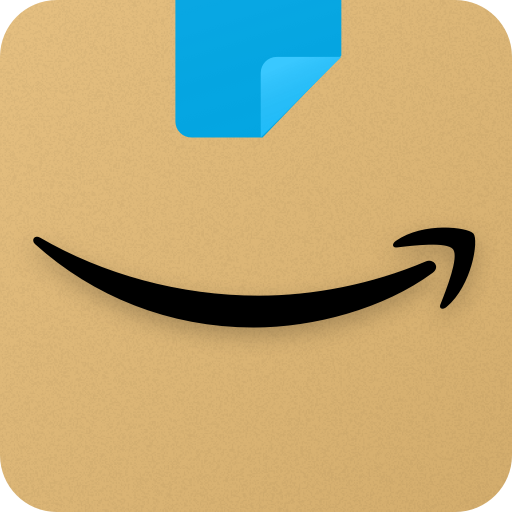Fast Budget: Managing Money With Clean Design
16th November 2025
Jake Hopkins
What is Fast Budgeting?
Fast budgeting is a sophisticated financial management technique aimed at streamlining the budget creation process, thereby facilitating effective money management for individuals while enabling them to achieve their financial objectives. This approach prioritizes efficiency and user-friendliness, allowing individuals to quickly visualize their income and expenses through intuitive budgeting tools.
By embracing fast budgeting, users can concentrate on their personal finance goals with efficient budgeting strategies and cost-effective solutions, such as savings strategies and prudent spending practices, while minimizing the time dedicated to complex financial planning.
In the constantly evolving landscape of financial literacy, fast budgeting is essential in enabling individuals to take control of their financial circumstances through smart budgeting and financial empowerment.
Applications such as Mint, YNAB (You Need A Budget), PocketGuard, and other money management apps exemplify how technology can enhance financial organization. These platforms enable users to track their spending in real-time, establish budget limits, and receive updates on their financial progress, thereby transforming the budgeting experience into a more engaging and interactive process.
By incorporating features that promote effective financial management-such as bill reminders, savings trackers, and financial insights-these applications significantly enhance the user experience, making the pursuit of financial stability both accessible and efficient.
The Importance of Clean Design in Budgeting
In the domain of budgeting, effective design is instrumental in enhancing user experience and promoting financial clarity, thereby facilitating the navigation of financial tools.
A successful budgeting system employs design principles that emphasize minimalist finance and clean metrics, enabling users to concentrate on essential metrics and actionable insights without being hindered by unnecessary complexities.
This design philosophy not only enhances the usability of budgeting applications but also contributes to the achievement of financial objectives through user-centric design by offering a streamlined approach to expense tracking and budget allocation.
Benefits of Simplified Budgeting
Simplified budgeting offers numerous advantages that enhance financial organization and provide actionable insights to individuals through visual budgeting and interactive budgeting, enabling them to address common budgeting challenges effectively. By adopting clear and straightforward budgeting methodologies, individuals can save time and minimize the stress associated with financial planning, thereby allowing them to concentrate on achieving their financial objectives.
This approach not only promotes financial literacy but also enables individuals to implement effective saving strategies through meticulous expense categorization and budget allocation and comprehensive budget analysis.
Streamlined budgeting fosters a deeper understanding of spending habits, which can facilitate more knowledge-based decision making through financial insights and expense tracking. It encourages the regular tracking of income and expenses, cultivating a habit of mindfulness in financial choices.
Furthermore, simplified budgeting assists in establishing realistic savings goals, making it easier for individuals to allocate resources for emergencies, future investments, or discretionary spending.
Collectively, these elements contribute to overall financial well-being by alleviating anxiety surrounding money management and fostering a sense of financial control through financial discipline and accountability partner. This ultimately leads to more confident and responsible practices in spending and saving.
Key Features of a Fast Budgeting System
A robust budgeting system incorporates essential features that promote effective financial management and design functionality, enabling users to automate their expense tracking and achieve their financial objectives with minimal effort.
Key components, such as budget forecasting, streamlined budgeting techniques, and financial software, are crucial in enhancing the user experience, allowing individuals to allocate their resources efficiently and monitor cash flow management effectively.
By integrating user-friendly interfaces, data visualization tools, and digital tools, these systems ensure that users can maintain financial clarity and accountability.
Automation and Organization
Automation in budgeting significantly enhances financial organization and time management, enabling users to efficiently manage their expenses and streamline cash management processes. By employing budgeting applications that incorporate automated features, individuals can generate expense reports and track their spending patterns without the need for manual input, thus allocating more time for strategic financial planning.
This increased efficiency not only promotes effective saving but also encourages a proactive approach to budget allocation and financial accountability.
This strategic shift towards automation fundamentally alters the manner in which individuals engage with their finances. For instance, applications such as Mint and YNAB (You Need A Budget) automatically categorize transactions, providing users with a comprehensive overview of their financial landscape. Users receive real-time alerts regarding overspending, which fosters fiscal discipline and aids in avoiding potential financial pitfalls.
Additionally, tools like PocketGuard offer features that calculate the amount of disposable income available after accounting for bills, financial goals, and project budgeting, facilitating informed spending decisions.
Through the implementation of these automated tools, individuals often find themselves achieving their financial objectives more swiftly, with reduced stress, and enhanced financial transparency, thereby paving the way for enhanced financial literacy and stability.
How to Create a Fast Budget
Creating an efficient budget necessitates the application of practical budgeting techniques that enable individuals to take charge of their financial planning and achieve their monetary objectives in a timely manner.
By utilizing user-friendly budget templates and emphasizing income tracking and financial dashboard, individuals can swiftly develop a comprehensive financial overview that facilitates effective budget allocation.
This process underscores the significance of clarity in understanding both expenses and revenue through clean design and intuitive design, which is essential for formulating an actionable and sustainable budgeting strategy.
Step-by-Step Guide
A step-by-step guide to efficient budgeting can significantly enhance financial accountability and promote user engagement through financial growth and lifestyle budgeting, rendering the process more accessible for individuals seeking to improve their money management skills.
This guide will delineate effective budgeting methodologies into manageable steps with budget calculator and design simplicity, enabling users to conduct thorough analyses of their budgets and attain a clear understanding of their financial positions. By adhering to this structured approach, individuals can refine their spending habits and align their financial practices with their long-term objectives.
With each step, from establishing clear financial goals to categorizing expenses and resource allocation, users can gain a comprehensive understanding of their financial flow and identify areas for improvement.
For example, tracking daily expenditures through a straightforward application can reveal unexpected spending patterns that might otherwise remain unnoticed.
Developing a realistic spending plan that incorporates both savings, discretionary expenses, and savings plan ensures that individuals do not feel constrained; rather, they are enableed to make informed decisions regarding their finances. By consistently reviewing and adjusting their budgets, individuals cultivate a habit of financial mindfulness, ultimately leading to greater control over their economic futures.
Tips for Successful Fast Budgeting
To achieve effective fast budgeting, it is essential to implement strategic approaches that maximize efficiency and design efficiency and proactively address common budgeting challenges.
These practices include utilizing financial tools, such as budgeting applications and expense tracking systems, which assist users in maintaining organization and focus on their financial objectives.
By adopting sound budgeting strategies, individuals can improve their financial literacy and cultivate effective saving habits, and a money mindset shift that contribute to long-term financial success.
Maximizing Efficiency and Effectiveness
Maximizing efficiency and effectiveness in fast budgeting necessitates a focus on design functionality, a user-friendly interface, and clean UI that enhances financial clarity for individuals. By employing intuitive budgeting tools, users can streamline their processes, ensuring quick access to and comprehension of their financial data. This methodology not only alleviates budgeting challenges but also encourages consistent engagement with financial planning, enabling users to make informed decisions regarding their spending and savings.
To further enhance the budgeting experience, it is essential to integrate design principles that prioritize usability and design aesthetics, including clear visual hierarchies and responsive layouts that accommodate diverse user needs.
The collection and implementation of user feedback play a crucial role in refining these tools, thereby increasing their adaptability and relevance over time, which are essential budgeting principles. Continuous improvements, informed by user insights, guarantee that budgeting solutions evolve in tandem with the changing financial landscape, ultimately fostering a stronger connection between individuals and their financial objectives, supporting effective goal setting.
This iterative development process not only enhances user satisfaction but also cultivates a community of financially literate individuals who are enabled to take control of their financial futures using smart spending strategies.
Common Mistakes to Avoid in Fast Budgeting
Avoiding common mistakes in expedited budgeting is essential for maintaining financial accountability and ensuring effective money management strategies throughout the budgeting process.
Many individuals encounter pitfalls such as neglecting expense categorization or failing to conduct regular reviews of their budget overview, which can impede their ability to achieve financial objectives.
By identifying these errors and understanding strategies to address them, individuals can develop stronger budgeting discipline and improve their overall financial well-being, achieving monetary discipline.
Pitfalls and How to Overcome Them
Recognizing and addressing budgeting pitfalls is crucial for maintaining financial discipline and achieving effective budgeting outcomes, allowing for responsive design adaptations. Common challenges include underestimating expenses, failing to communicate budget expectations, and neglecting regular budget adjustments, all of which can undermine financial plans.
These pitfalls often arise from insufficient planning and assumptions regarding income and expenditure patterns, highlighting the need for cost tracking. For instance, when individuals disregard variable expenses, they may encounter unexpected costs that disrupt their meticulously developed financial plans, requiring expense optimization.
To mitigate these issues, implementing a zero-based budgeting approach can be beneficial, as it ensures that every dollar is accounted for, thereby reinforcing financial awareness and adopting minimalist budgeting principles.
Additionally, it is essential to conduct regular family meetings to discuss budgetary goals and performance, promoting design clarity and shared accountability. This collaborative effort minimizes misunderstandings and strengthens commitment to the budget, ultimately enhancing financial discipline through clean visuals.
Frequently Asked Questions
What is Fast Budget and how does it help with managing money?
Fast Budget is a budgeting app that uses a clean and simple design to help users manage their money effectively. It provides a user-friendly platform to track expenses, set financial goals, and create a budget easily, utilizing clean UI and wireframe budgeting.
How does the clean design of Fast Budget benefit users?
The clean design of Fast Budget allows users to easily navigate the app and understand their financial data without any confusion, incorporating aesthetic finance features. It also makes it visually appealing and less overwhelming for users who may not be familiar with budgeting, emphasizing clean layout and interface design.
Can I customize my budget categories in Fast Budget?
Yes, you can customize your budget categories in Fast Budget to fit your specific needs and spending habits, supporting frugal living and spending analysis. This allows for a more personalized and accurate budgeting experience.
Does Fast Budget have any features to help with saving money?
Yes, Fast Budget has a savings goals feature that allows users to set financial goals and track their progress. It also provides money-saving tips and suggestions to help users save money and reach their goals faster.
Is Fast Budget a free app?
Fast Budget offers a free version with basic features, but it also has a paid subscription option with more advanced features. Users can choose which option works best for them based on their budgeting needs, considering mobile budgeting preferences.
Is my financial data secure on Fast Budget?
Yes, Fast Budget takes the security of user's financial data very seriously. The app uses advanced encryption methods and never shares user's data with any third parties without their consent, ensuring digital wallets security.















